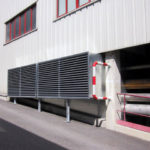Covid 19 has had a drastic impact on the lives of the population. The confinement measure, taken by the governments of different countries to reduce the spread of the virus, has marked a before and after in the acoustic panorama.
Noise levels as a result of the pandemic
The first week of confinement, a great noise reduction was observed in cities, but as the days have gone by, the global noise reduction has become very evident, especially in those countries that have taken a little longer to take extreme measures. lockdown.
These are some noise reduction data detected at specific times:
- Cities: -7dBA Lden*
- Intercity traffic: -4.5 dBA Lden
- Industrial areas: -11 dBA Ln*
- Night: -24 dBA Ln
* Lden: noise index day-afternoon-night
* Ln: noise level at night
The return of some services and relaxation of confinement measures have once again increased noise levels somewhat, but have left a clear exposure of the noise sources that have the greatest impact on the environment: urban and interurban road traffic, industrialized areas and night life.
Benefits of this reduction in noise levels
When we see these numbers it seems logical to us to think of changes that occur thanks to the decrease in noise pollution.
Without a doubt, the first thing we see is inside cities: drastic changes in pollution levels, but also in vibrations and small seismic movements generated by traffic, trains, works and urban activity. This reduction in seismic noise makes it possible for us to hear our planet, the birds, the sound of the wind.
For seismologists it is an advantage that allows seismic sensors to detect more subtle but important movements in the interior of the earth, which normally go unnoticed due to noise.
But we cannot forget the impact on marine life: the decrease in shipping in exports and imports, and the consequent reduction in underwater noise pollution have improved the living conditions of many species, according to a statement by Canadian scientists in The Guardian.
Related services
You are viewing information about Noise reduction during confinement but you may also be interested:
How to reduce noise at home
If you want to reduce noise at home, we will explain the materials that you surely have at home and they work perfectly to attenuate sound.

Success story: acoustic adaptation
We present an acoustic adaptation whose main objective was to make the sound emitted by a flamenco guitar as natural as possible.

Acoustic Treatment of Machinery
The annoying sound of machinery in buildings affects the well-being of many people. The solution is acoustic barriers specially designed for each case.

Acoustic study for activity licenses
To open a business it is necessary to be in possession of a license that authorizes and confirms that your activity is authorized by the competent bodies.

How to reduce industrial noise
Reducing industrial noise and vibration at an acceptable cost is essential for many companies. At Prolisur it is our specialty.





